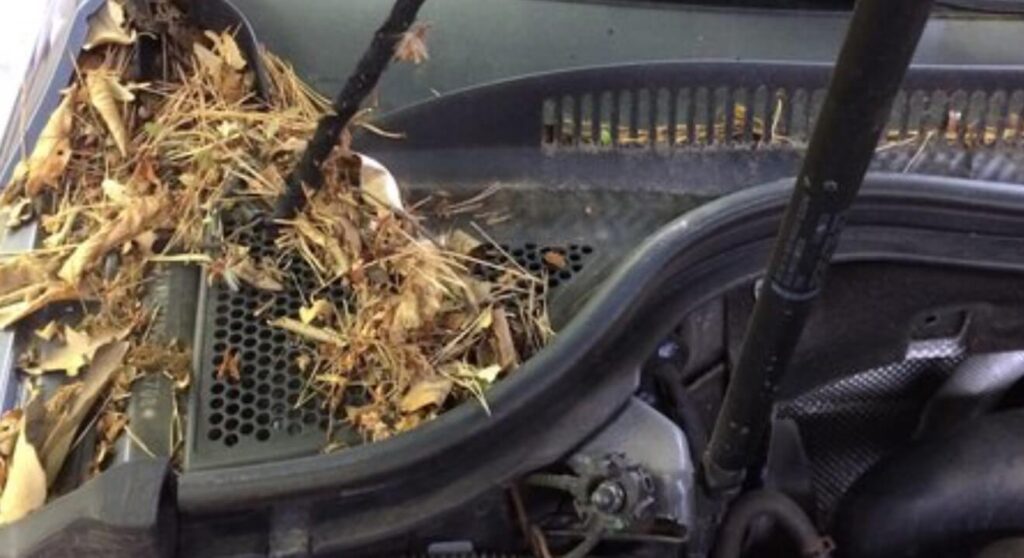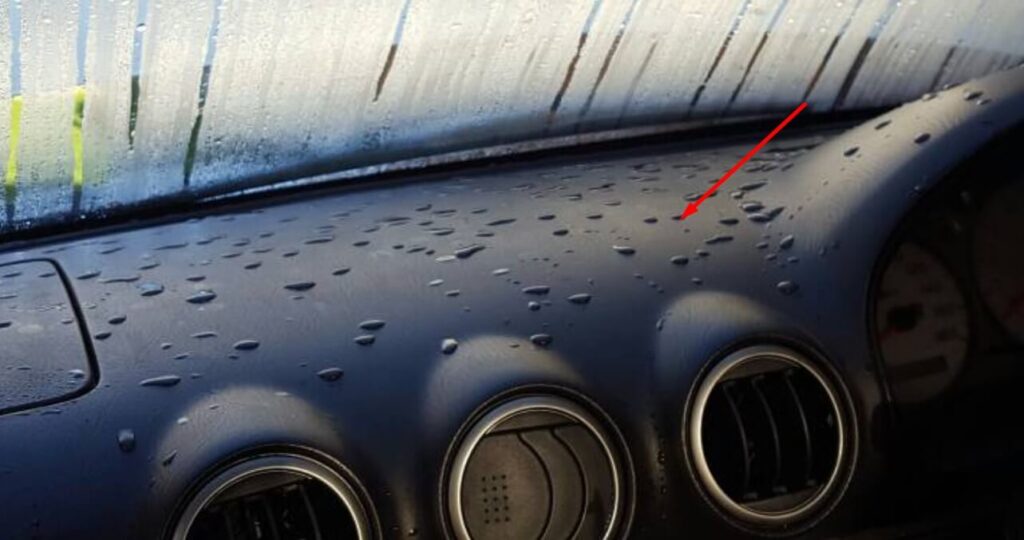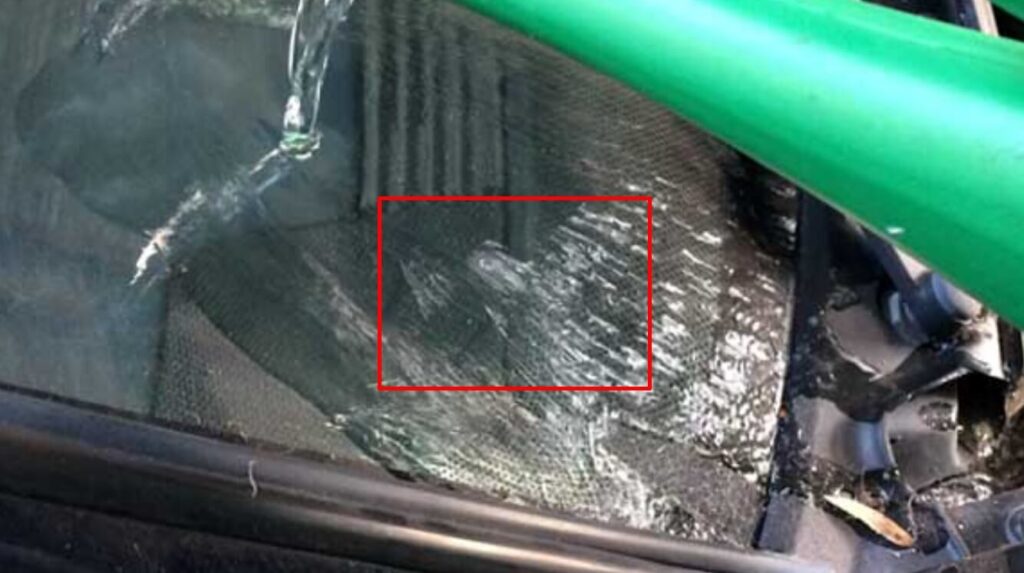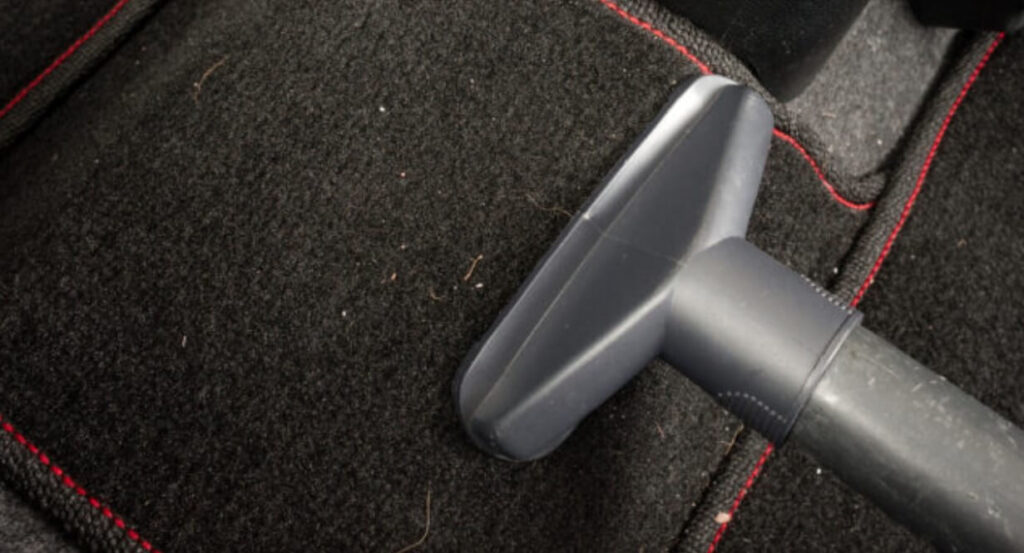When it rains, the floor of your car can become wet for several reasons. One reason is that water can seep in through small cracks or holes in the windows, doors, and roof of your vehicle. Additionally, condensation from within the car can cause moisture to appear on both interior and exterior surfaces.
Sometimes rainwater may also be tracked into the car by passengers who are entering and leaving, which will then settle onto the flooring. In some cases, a worn-out seal around a window or door may allow enough water inside that it pools up on your carpets or mats rather than draining away properly.

Why is the Driver Side Floor of My Car Wet?
If you have noticed that the driver side floor of your car is wet, it is likely due to a leak in the vehicle. This could be anything from a faulty seal or gasket around one of the windows, which would allow water to enter when it rains, to an issue with your air conditioning system draining water onto the floor.
If you suspect there is a problem causing this moisture on the driver side floor of your car, contact a qualified mechanic as soon as possible and have them inspect it for potential issues.
Why is the Passenger Side Floor of My Car Wet?
If you’ve noticed that the passenger side floor of your car is wet, it could be due to a variety of reasons. Most commonly, this is because water has seeped in through the doors or windows when they are open during rainstorms or after driving through puddles.
Additionally, it could also be caused by a leaky sunroof drain tube or an overflowing air conditioning condensation line.
If these don’t seem to be the cause of your wet floor, have it checked out by a professional as soon as possible, since moisture can lead to rust and other damage if left unchecked for too long.

Why is My Passenger Side Floor Wet When It Rains?
When it rains, moisture from the rain can be absorbed into the floor of your car if there is a hole or crack in any part of its body. This can cause your passenger side floor to become wet when it rains.
Additionally, condensation can form on cold surfaces like air conditioning ducts and windowsills, which may eventually make its way onto the passenger side floor as well.
Why is the Inside of My Car Wet?
When you get into your car and find that it’s wet inside, it can be a cause for concern. This could be caused by condensation or humidity in the air coming into contact with cold surfaces like windows and doors.
Additionally, depending on where you live, rainwater may have leaked through small cracks around the seals of your door frames or windows.
To protect yourself from further moisture damage to the interior of your vehicle, do an inspection around the edges of all doors and windows to check for water leakage and reseal any openings as needed.

Wet Floor in Car Passenger Side
Cars can suffer from wet floor on the passenger side due to water leaking through the vehicle’s seals and windows. This could be caused by a broken seal or window, heavy rain, or even a blocked drain hole.
If your car has suffered from wet floor on the passenger side, it is important to identify what is causing the leak and have it fixed as soon as possible before any further damage occurs.
My Car Carpet is Wet And Smells
If your car carpet is wet and smells, it could be a sign of a leak in the vehicle. Before trying to identify or resolve the issue, it’s important to safely remove any standing water by soaking up as much liquid as possible using absorbent materials such as towels or rags. Once you’ve removed any excess moisture, open windows and doors to allow air circulation throughout the interior and dry out the area.
Depending on what caused the leak in your car, you may need to contact an automobile technician for further assistance with repairs or replacement parts.
Why Does My Floor Get Wet When It Rains?
When it rains, water can seep into the gaps between your walls and floors or come in through windows and doors. This is especially true if you have an older home that may not be properly sealed or insulated. In some cases, heavy rainfall can even cause flooding if there are poor drainage systems outside your house.
To prevent this from happening, make sure to check for any cracks in the walls or foundation that could allow rainwater to enter and ensure proper insulation around windows and doors.

Car Floor Wet How to Dry
If your car floor is wet, the best way to dry it is by removing all of the items that are on or around the carpet. Next, use a large absorbent towel and blot up as much water as possible. Once you have removed most of the liquid from the area, use a fan or hair dryer to further dry out any remaining moisture in the carpet fibers.
You may also want to consider using an automotive dehumidifier if your vehicle has been exposed to high levels of humidity for extended periods of time.
Finally, be sure to check for signs of mold growth since this can occur when carpets stay damp for too long.
Why is the Driver Side Floor of My Car Wet When It Rains?
When it rains, water is likely to enter your car through a variety of sources. Here are some common causes:
Leaking windows: Water can accumulate around the window seal and trickle into the vehicle.
Clogged drains: Your car has several drainage holes that direct water away from the interior. If these become blocked, water can pool in the cabin or on the floor.
Damaged seals: Rubber weather seals may wear out over time and allow moisture to seep inside.
To prevent further damage, it’s important to identify and address any issues as soon as possible. A qualified mechanic can help diagnose and repair leaks in your vehicle quickly and efficiently.
how to fix wet floor in car?
Fixing a wet floor in your car involves identifying and addressing the source of the water. Here’s a general guide:
- Locate the Source: Determine whether the water is entering the car from outside (e.g., leaks, damaged seals) or if it’s an internal issue (e.g., AC drainage, leaks from the heater core).
- Check Seals and Windows: Inspect the rubber seals around windows and doors for any visible damage or wear. Ensure windows are fully closed, and replace damaged seals if necessary.
- Clear Drainage Channels: If water is coming from the AC or heater, check the drainage channels. They can sometimes get clogged, leading to water accumulation. Clear any debris or obstructions.
- Inspect Weather Stripping: Check the weather stripping around doors for any gaps or damage. Replace or repair as needed to prevent water seepage.
- Examine Floor Pans: Inspect the floor pans for rust or holes. If found, they may need to be patched or repaired to prevent water from entering.
- Clogged Sunroof Drains: If your car has a sunroof, check for clogged drains. Use compressed air or a small wire to clear any blockages.
- Use a Wet/Dry Vacuum: If the floor is already wet, use a wet/dry vacuum to remove as much water as possible. This helps prevent mold and mildew.
- Dry the Interior: Leave doors or windows open, use fans, or even a dehumidifier to thoroughly dry the interior. This prevents mold growth.
If the issue persists or you’re unable to identify the source, it’s advisable to consult with a professional mechanic or auto detailing service for a thorough inspection and repair.
Why your floor may be wet on the passengers side of your car! Fix it for good!
Why is My Floor Wet When It Rains?
When it rains, moisture can seep through your home’s exterior walls and windows. This can cause the floor to become wet.
- Water may enter around poorly sealed window frames or doors.
- Rainwater might be dripping from a leaky roof.
- Poorly insulated attics or crawlspaces allow water vapor to collect on floors below them.
- Basement walls that are not properly waterproofed may also be contributing to the problem.
Ultimately, understanding why your floor is wet when it rains requires an in-depth inspection of your home’s structure and its ability to contain air and moisture effectively.
Why is My Car Floor Carpet Wet?
There are several possible explanations for why the carpet in your car is wet.
Leaking coolant from the air-conditioning system: Coolant can leak from a faulty air conditioning system, leaving moisture on the floorboard.
Rainwater seeping through broken seals: If there’s a crack or gap in your window seals, rainwater could be entering and collecting on the floor of your vehicle.
Condensation buildup: When warm air meets cold surfaces such as windows or metal components, it can cause condensation to form and settle on parts of your car including its interior floors.
In any case, it’s best to investigate further by inspecting other parts of the car that might be causing this issue so that you can properly fix it before any more damage is done.

Car Floor Wet Under Mat
Discovering a wet car floor under the mat can be indicative of various issues. Common causes include leaks from the windows, doors, or even the roof, as well as potential issues with the vehicle’s heating, ventilation, and air conditioning (HVAC) system. It’s essential to investigate the source of the moisture promptly to prevent potential damage to the interior and address any underlying issues.
Car Floor Wet Under Mat Driver Side
If the car floor is specifically wet under the mat on the driver’s side, this localized issue could be caused by a leak in the driver’s side door seal, window seal, or a clogged drainage system. Check for visible signs of leaks, inspect the seals for any damages, and clear any debris from drainage channels. Additionally, examine the vehicle’s weather stripping for wear and tear that may contribute to water seepage.
How to Fix Rain Water Leaking into Passenger Side Floor?
Fixing rainwater leaking into the passenger side floor involves identifying and addressing potential entry points. Start by examining the window seals, door seals, and the vehicle’s exterior for any visible signs of leaks. Check for clogged drainage channels, as water accumulating in these areas can lead to leaks into the interior.
In some cases, resealing or replacing worn weather stripping may be necessary. If the issue persists, seeking professional assistance can help pinpoint and remedy the source of the water intrusion effectively.
Conclusion
In conclusion, if you find that the floor of your car is wet when it rains, there are a few potential causes. Most likely, the water is coming in through worn-out weather stripping or open windows and doors.
If the weather stripping needs to be replaced or the windows need to be closed tightly, then this should help reduce any moisture buildup.
However, if these solutions do not work and you still have a wet floor after it rains, then it might be time to take your vehicle into an auto shop for further inspection and repairs.
